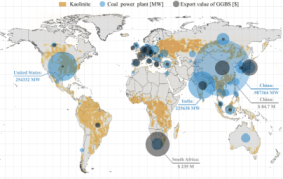Life Cycle Assessment of alkali activated materials: preliminary investigation for pavement applications
DOI:
https://doi.org/10.21809/rilemtechlett.2021.120Keywords:
alkali activated materials, lca, pavements, co2 intensityAbstract
The capital investment in the US for construction and maintenance of the infrastructure road network is $150 billion/year. Investments in OECD countries will likely stabilize, while other countries will face an exponential growth of investments for infrastructures driven by the development of metropolitan cities. Continued “business-as-usual” practice for portland and asphalt cement concrete pavement construction ignores the increasing warning calls for the identification of more sustainable and less energy intensive paving materials.
Alkali activated materials concrete (AAM) have been studied with growing interest during the last three decades. AAM show promising results in terms of mechanical performance, while also having a global warming potential impact 30-80% less than that of portland cement concrete. The global warming potential of AAM is closely dependent on the: 1) activating solution used to activate the raw material and 2) origin of the raw material. Specifically, the impact of the transport for both of these components is ~ 10% of its global warming potential. Hence, to increase the adoption of AAM for pavements, it is fundamental to analyze the existing literature to clarify the link between environmental impact and mechanical performance, identifying opportunities for applications that are tailored to the local availability of raw material.

Downloads
Published
How to Cite
Issue
Section
License
Copyright (c) 2021 Francesca Lolli, Kimberly E. Kurtis

This work is licensed under a Creative Commons Attribution 4.0 International License.
Authors retain copyright of the articles published in RILEM Technical Letters and grant the journal the right of first publication with open access. The work is simultaneously licensed under Creative Commons Attribution 4.0 International License (CC BY 4.0) that allows others to share and adapt the work under the following terms: 1) a proper attribution is given in a form of bibliographic record with the DOI link directing to RILEM Technical Letters; 2) a link to the license is provided; 3) the changes (if any) are indicated.









